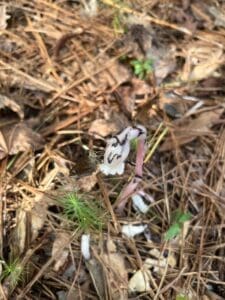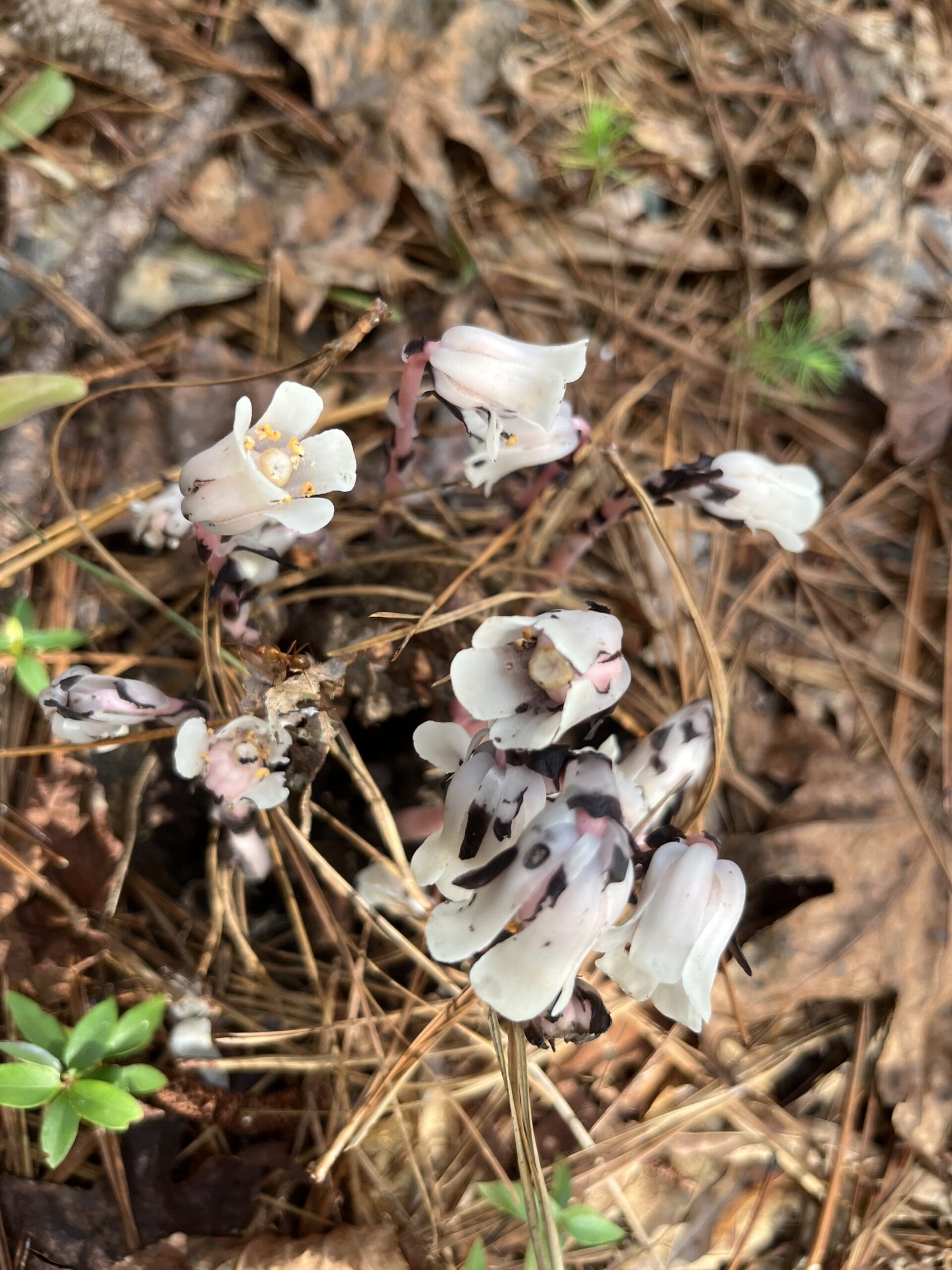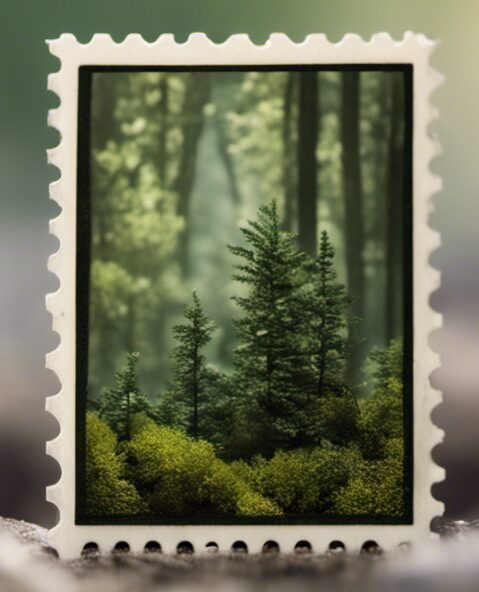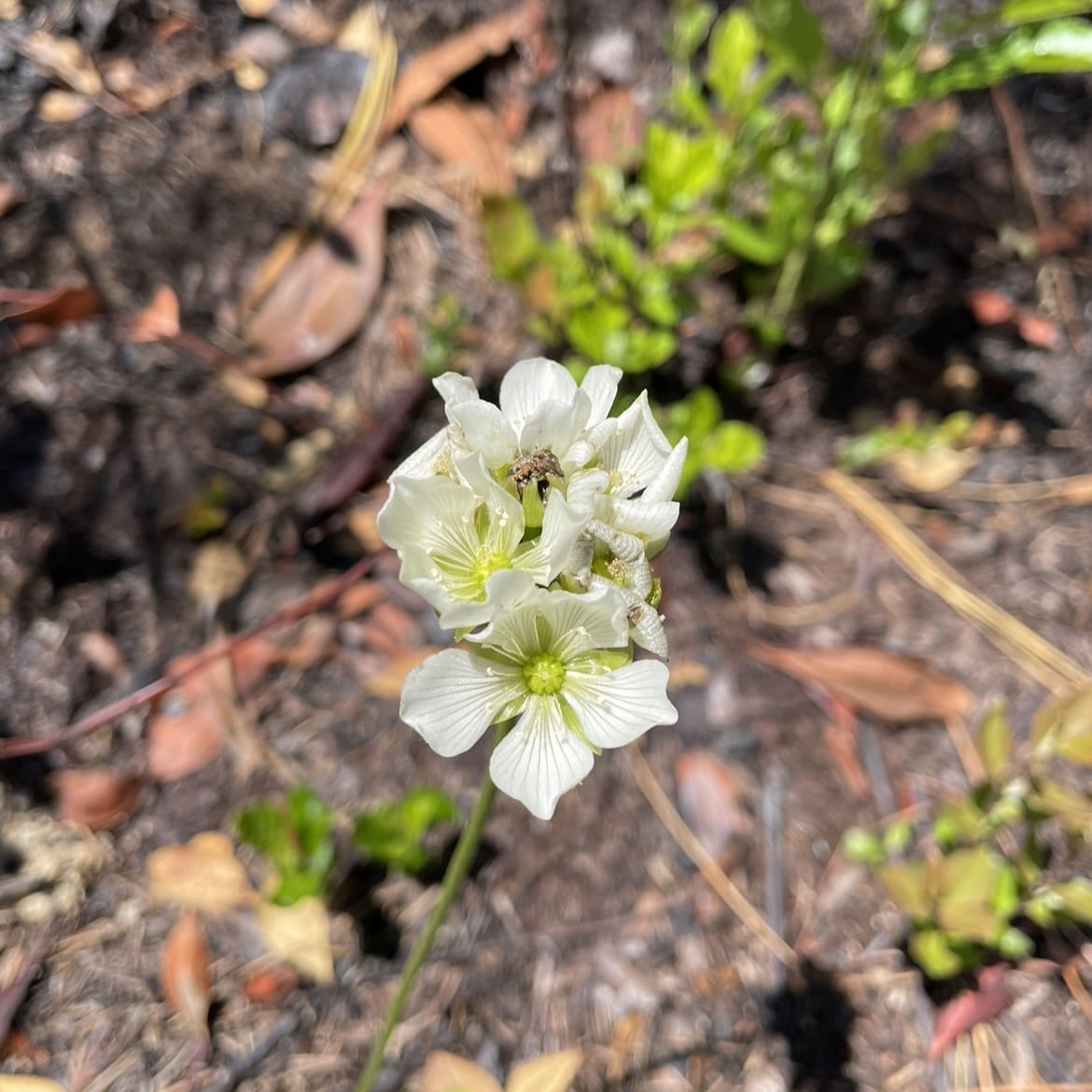October, the first real month of fall. The month of pumpkin spice, “sweater weather”, and nights by the fire pit. For these reasons October is a favorite for many, but for others October is their favorite because it is spooooooky season! In honor of spooky season, we will be discussing none other than the ghost pipe plant, Monotropa uniflora.

The ghost pipe plant (Monotropa uniflora). Credit: Becky Ryon.
At first glance, ghost pipe does not even look like a plant. Often it is mistaken for a fungus. I know the first time I saw it as a child I thought it was made of wax! But, it is indeed a plant in the Ericacaea. That’s right, ghost pipe is related to blueberries and azaleas. Who would have guessed? The genus Monotropa comes from the Greek monos, meaning “single” and tropos, meaning “a turn”, referring to the downward curve of the flowering stem. The specific epithet uniflora is Latin for “one flowered” referring to the single flower per stem.
So why is ghost pipe white (sometimes slightly pink) instead of green like most plants? This is because the plant does not produce chlorophyll (the green pigment in plants) and therefore is unable to produce its own food from sunlight. Instead this plant is saprophytic, meaning it relies on the energy produced by other organisms. In this case the ghost pipe gets its nutrients from the roots of trees via mycorrhizal fungi.
Ghost pipe has a very large native range. It is known in all but seven US states, across Canada, and can also be found in Asia. It grows in a wide variety of moist to dry forests with a deep humus layer, mainly at lower elevations. Plants get to be around 4-6 inches tall with small scale-like leaves. The flowers are made up of five parts and may be present from June through September. Pollination is conducted by long-tongue bees, bumble bees, flies, and other insects.
Traditional medicine and modern foragers use ghost pipe to make a tincture that has been used to manage pain, treat anxiety, and other neuronal disorders. Ghost pipe tincture should be used sparingly due to the plants containing glycosides, which can be toxic in large quantities. If you venture into medicinal uses of wild plants, always remember to harvest sustainably, taking only a small portion of the population, and always get permission from the landowner. Never remove anything from public land.
Happy spooky season y’all!
Further Reading:
https://wildadirondacks.org/adirondack-wildflowers-indian-pipe-monotropa-uniflora.html
https://www.foraged.com/blog/how-to-make-ghost-pipe-tincture




